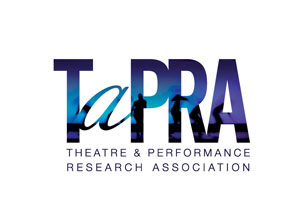in University of Bristol, UK, September 5-7, 2016

Scenography and Borders: Practice, Place and Politics
The Scenography Working Group invites proposals for our forthcoming meeting at the annual TaPRA conference in Bristol in September 2016. This year’s meeting will focus on questions around the importance of place and national identity in scenography, current international politics around borders and migration, and the question of disciplinary borders in relation to scenography.
At the 2015 Prague Quadrennial of Performance Design and Space, the Golden Triga for the best national exhibit of the International Exhibition of Countries and Regions was awarded to Estonia for their exposition titled Unified Estonia. This exhibit presented the performance of a fictitious political party that a significant percentage of the Estonian population accepted as real. In light of this exhibit and given the continued organisation of the PQ around the Countries Exhibit, the discussion of whether national identities are of critical importance in the development of scenography is timely.
The Estonian exposition also points to the rise of nationalism across the UK and Europe, and the highly contested politics around migration and borders. Unprecedented movement of people has sparked a crisis in Europe around questions of national sovereignty and the future of the European Union, while in the United States, politicians are discussing the construction of physical walls along national borders. Meanwhile, wars in the Middle East have led to the ongoing shifting of national geographies.
In this context, it is worth considering the national exhibition format: how does this allow us to reflect on the politics of the nation state? What can scenography (and its exhibition) reveal to us about international politics, borders and the importance of place?
Given the immediacy of scenography as a live art form, notions of place and identity can often play a part in the development of practice based and critical trends. On the other hand, the emergence of virtual scenographies, for example Blast Theory’s Karen, creates the possibility for work that might transcend the question of place when the audience for such works no longer shares a geographical location.
Thea Brejzek has described scenography as a “transdisciplinary practice of the design of performative space [that] can no longer be assigned to a singular genre…” (2011, 8) and this leads to a discussion of disciplinary border crossings, giving the increasing critical consensus around scenography’s interdisciplinarity.
We invite presentation proposals from a wide variety of scholars and practitioners. Fully embracing the interdisciplinarity of the field, we are keen to include proposals that would be suitable for panel sessions open to members of other working groups, or joint proposals from members of more than one working group.
As a working group we actively promote practice-as-research methods and welcome proposals in a variety of different presentation formats. These formats can include, but are not limited to:
* A PowerPoint presentation with 20 images/sides set to automatically progress after 20 seconds. Presenters are then invited to speak alongside their images if they wish. This format is ideal for sharing image-based provocations or artistic practice in a time efficient manner.
If you plan to submit a proposal that includes a technical or spatial requirement, early consultation with us is important if you are planning something large, unusual or complicated. If this applies, please contact the working group convenors to discuss your requirements before you submit.
Your presentation proposal, irrespective of format, should include a 200-300 word abstract along with a short biography. We plan to structure this year’s working group around the strengths of the applications we receive. If you wish to be considered as part of a panel or joint event, please state this within your proposal.
Suggested topics relating to the broad theme of ‘Scenography and Borders: Practice, Place and Politics’ include, but are not limited to, the following:
Proposals must be sent to each of the Scenography Working Group Co-Convenors by 18th April 2016:
Siobhán O’Gorman, siobhanmogorman@gmail.com
Luis Campos, luis.campos@bruford.ac.uk
Kathrine Sandys, Kathrine.Sandys@bruford.ac.uk
Lucy Thornett, l.thornett@lcc.arts.ac.uk